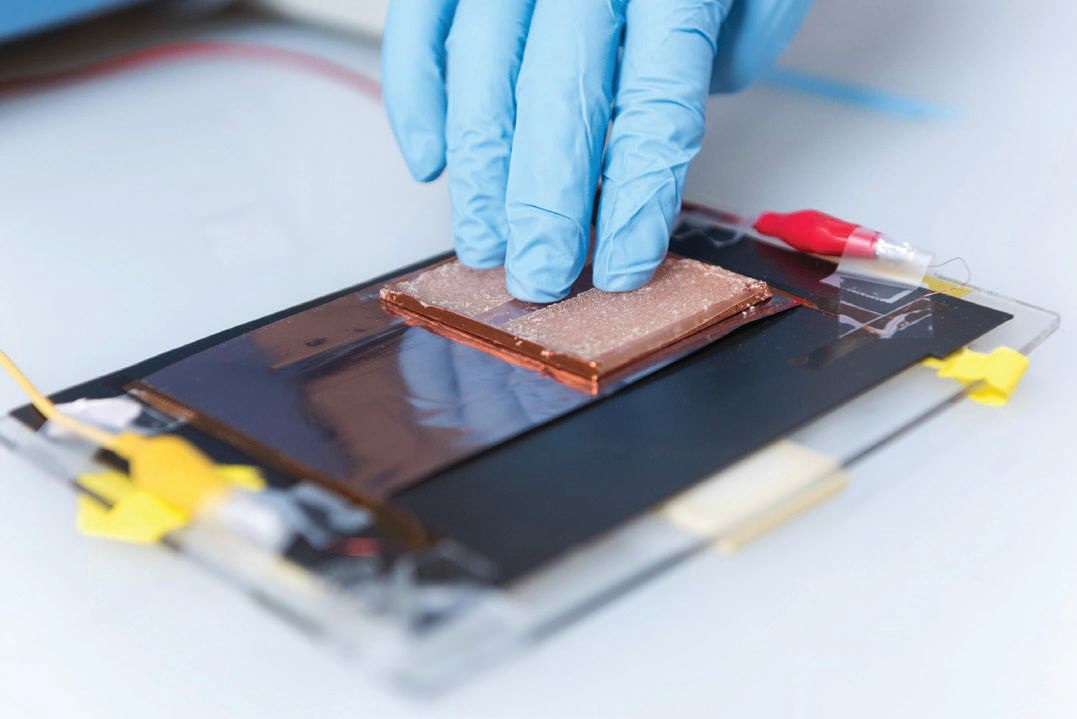Role of friction in improving mass spectrometry
Dr. Neil Canter, Contributing Editor | TLT Tech Beat July 2017
A new technique improves efficiency of ionization and might enable portable mass spectrometry.
KEY CONCEPTS
•
Mass spectroscopy is a useful analytical technique that is limited due to the need for high sample amounts and low efficiency.
•
A more efficient ionization process known as triboelectric nanogeneration that works through production of friction has been developed.
•
Triboelectric nanogeneration can enable mass spectrometers to use nanoliter quantity samples and be run continuously.
FOR THE ANALYSIS OF SMALL PERCENTAGES of a specific compound such as a contaminant in a lubricant system, mass spectrometry has proven to be useful though time consuming and expensive. In doing analysis of specific metals such as zinc present in an engine oil, a technique such as inductively coupled plasma (ICP) atomic emissions spectroscopy has proven to be useful.
Analytical techniques are continuing to improve so that they can provide more information to assist a wide range of individuals from researchers to lubricant maintenance engineers. In a previous TLT article, a technique known as synchroton X-ray analysis was used to produce three-dimensional images of cast iron alloys (
1). This process will provide more useful structural information than two-dimensional techniques enabling the preparation of superior cast iron alloys for particular applications.
While mass spectrometry can be useful, this analytical method has some limitations. Facundo Fernandez, Vasser Woolley Foundation chair in bioanalytical chemistry and professor in the School of Chemistry and Biochemistry at Georgia Tech in Atlanta, Ga., says, “Ionization of neutral atoms and molecules is essential to produce charged ions that can be analyzed for molecular weight by a mass spectrometer. The ratio of mass-to-charge is determined to enable specific chemical substances to be identified. High voltage is applied to an ion source to enable the conversion of neutral molecules to gas-phase ions.”
Fernandez indicates that there are two main limitations with the current process. He says, “The amount of sample required for current mass spectrometers is too high and the efficiency of the mass spectrometers is too low. For example, when 1,000 neutral molecules go through the current ionization process, 1% or less are ionized and successfully analyzed. In evaluating new substances such as pharmaceuticals or proteins this is a waste. An improvement in efficiency is critical so that smaller sample sizes can be successfully evaluated for specific impurities in some cases.”
Other concerns with current mass spectrometry ionization techniques are high cost, inability to make the technique portable for use in remote locations outside of a lab and safety issues. A new technique has now been developed that improves efficiency of ionization and also may enable mass spectrometry to be used in a portable manner.
TRIBOELECTRIC NANOGENERATORS
Fernandez and his colleagues used a power generation method known as triboelectric nanogenerators (TENGs) to develop a more efficient ionization process. He says, “Our colleagues in the Materials Science and Engineering Department developed TENGs as a means for converting mechanical energy into electricity. Two surfaces slide against each other to produce friction. During this process, the original electrostatic balance is broken as charges are redistributed.”
A TENG consists of a triboelectric layer and two electrodes. Fernandez says, “We slid a copper layer against a polymer that pushed positive charges to one side and negative charges to the other side. The only way back to the neutral is to have the charges flow through a nanospray and eventually get sucked into the mass spectrometer. We believe this approach is very elegant and very controlled compared to the use of high voltage.”
Figure 3 shows an image of a sliding TENG.
 Figure 3. Use of a sliding triboelectric nanogenerator to ionize molecules more efficiently may enable a mass spectrometer to be used on site to measure small quantities of metal contaminants in a lubricant system in the future. (Figure courtesy of Georgia Tech.)
Figure 3. Use of a sliding triboelectric nanogenerator to ionize molecules more efficiently may enable a mass spectrometer to be used on site to measure small quantities of metal contaminants in a lubricant system in the future. (Figure courtesy of Georgia Tech.)
While the most common ions analyzed for mass spectrometry are positive, negative ion ionization also can be used. Fernandez says, “If an analysis requires a determination of the presence of a carboxylic acid or a phenol derivative, then negative ions are more suitable for detecting these species.”
The researchers also tried using a TENG based on compressing the two surfaces together. Fernandez says, “We prefer the sliding technique because it is much easier to control and adapt to a specific application.”
Compared to the current ionization technique, TENG does not outperform high voltage ionization if a micromolar quantity of sample is available. Fernandez says, “For sample sizes below micromolar levels, TENG exhibits incredible sensitivity down to the hundreds of molecules level. If only 15 nanoliters of sample are present, TENG can analyze the specific components of the sample. TENGs are not yet able to analyze a single molecule but we are getting closer to that goal.”
The other benefit of using TENG is that mass spectrometry can now be run on a continuous basis. Fernandez says, “Current voltage ionization techniques involve pulse sampling where loss of the ionized sample can occur. With TENG, ion generation and ion analysis can be synchronized. This is another reason why TENG is more efficient and more able to handle tiny sample sizes.”
Fernandez indicates that he and his colleagues are looking to see how effective TENG can be used with minute samples sizes. Another aspect of future work will concern development of next generation mass spectrometers that are portable.
From a lubricant analysis standpoint, imagine that a portable mass spectrometry will become available in the future that can be used on site to measure minute amounts of specific metals to help fluid maintenance personnel determine if a particular system is starting to fail long before there is problem. Such a powerful technique may enable faster corrective action further extending the operating life of a lubricant.
Additional information on this research can be found in a recent article (
2) or by contacting Fernandez at
facundo.fernandez@chemistry.gatech.edu.
REFERENCES
1.
Canter, N. (2016), “Cast iron alloys: Better analysis approach,” TLT,
72 (3), pp. 14-15.
2.
Li, A., Zi, Y., Guo, H., Wang, Z. and Fernandez, F. (2017), “Triboelectric nanogenerators for sensitive nano-coulomb molecular mass spectrometry,”
Nature Nanotechnology,
12 (5), pp. 481-487.
 Neil Canter heads his own consulting company, Chemical Solutions, in Willow Grove, Pa. Ideas for Tech Beat items can be sent to him at neilcanter@comcast.net
Neil Canter heads his own consulting company, Chemical Solutions, in Willow Grove, Pa. Ideas for Tech Beat items can be sent to him at neilcanter@comcast.net.